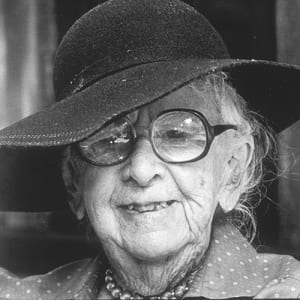
Marjory Stoneman Douglas
Marjory Stoneman Douglas was a journalist and environmentalist who helped defend the Florida Everglades.
Who Was Marjory Stoneman Douglas?
Marjory Stoneman Douglas was a journalist and a pioneering environmentalist who helped defend the Florida Everglades. As a young woman, she was a writer and editor at the Miami Herald, which her father helped to establish in 1910. She became known for work in nature conservancy after her 1947 book Everglades: River of Grass was published, but it was many years later, in 1969 at age 79, when she founded the Friends of the Everglades. She was not only an advocate for the environment but also for women’s right to vote and for racial equality. In 1993, she received the Presidential Medal of Freedom.
How Did Marjory Stoneman Douglas High School Get Its name?
Because Douglas was an influential leader in Florida, several buildings are named for her.
Stoneman Douglas High School Shooting
Marjory Stoneman Douglas High School, built in 1990, became nationally known on Feb. 14, 2018, when a 19-year-old gunman Nicholas Cuz opened fire in the school, killing 17. The school’s surviving students became highly active in the fight for stricter gun-control laws, and the outrage marked a turning point on the issue: Several national retailers raised the age minimum for buying guns in response to the shooting and the students’ advocacy. Additionally, two national protests took shape: On March 14th, students across the country have planned the National School Walkout, and the March for Our Lives rally in Washington D.C. is set for March 24th.
Also named for Douglas is an elementary school in Miami and a Florida Department of Environmental Protection building in Tallahassee. The Marjory Stoneman Douglas Biscayne Nature Center on Key Biscayne is an education project of the Miami-Dade County’s schools and parks departments and a non-profit community group.
Saving the Florida Everglades, the ‘River of Grass’
Douglas had been a reporter and editor for years when she was asked to write a book series on America’s rivers. The publisher asked her to write about the Miami River, but she pointed out that wouldn’t be a compelling read: “It’s only about an inch long,” she said, according to her account in her autobiography.
Instead, she proposed writing about the Everglades, the 1.5 million acres of wetlands that include the flow of freshwater from Lake Okeechobee to the Florida Bay and the Ten Thousand Islands. In her early research, she asked the state’s hydrologist: “Do you think I could get away with calling it the river of grass?”
The phrase was coined, and about five years later it was used for the title of The Everglades: River Of Grass, published in 1947.
Protecting the Wilderness
Coincidentally, the Everglades National Park was also dedicated in 1947. That designation was about 25 years in the making, according to Douglas, who was on a committee to support it. And it was a hard-won fight, she wrote in her autobiography: “There was no organized environmental movement until the late 1960s, and little understanding of what ecology is about. Back in the 1920s, a few of us sensed that water was the key to the health of the Everglades, so perhaps we were untutored environmentalists even then.”
One of the challenges to appreciating the area’s water flow, as well as the plants and wildlife that depend on it, is that the area is not easy to access or accommodating to visitors.
“To be a friend of the everglades,” Douglas wrote, “is not necessarily to spend time wandering around out there. It’s too buggy, too wet, too generally inhospitable for camping or hiking or the other outdoors activities which naturalists in other places can routinely enjoy.”
To eager developers, the area can appear to be empty marshlands, thus prime territory for draining and building on. Over the years, several building projects were attempted, on areas outside official parkland, and in the late 1960s a jetport was proposed. In 1969, Douglas, nearly 80 years old, was asked to lead an effort against it, and so she formed Friends of the Everglades. She began touring the area, giving speeches and signing up new members. After about a year, the group had 500 members, then 1,000 after two years, she wrote, “later 3,000 members from 38 states.”
After the jetport project was stopped, the Friends of the Everglades continued on to protect the state of water in the area. It is still active today with a stated mission “to preserve, protect, and restore the only Everglades in the world.”
Facts, Early Life and Accomplishments
Born in Minnesota on April 7, 1890, Douglas grew up in Massachusetts and lived with her mother after her parents’ divorce. She graduated from Wellesley College, then married a con man who attempted to scheme her father out of money. That ploy brought her father back to her life, and after her divorce, she moved to Florida to live with her father and his wife.
Her father had founded a newspaper that was later bought and renamed the Miami Herald, where Marjory’s first job was as society editor. She later had her own column called “The Galley,” in which she included her own poetry. She later wrote articles for many publications, as well as fiction and plays.
During World War I, she joined the American Red Cross and served in Europe, writing reports of her team’s work.
In her later life, she received numerous honorary degrees and awards, notably the Presidential Medal of Freedom. She was inducted into the Florida Women’s Hall of Fame in 1986 and the National Wildlife Federation in 1999. Her home in Miami’s Coconut Grove neighborhood was designated in 2015 as a National Historic Landmark.



